The 10 most dramatic moments in pro cycling in 2022
From Jumbo-Visma's assault on Pogačar to Van Vleuten's shock world title, we look back at the season's jaw-dropping moments
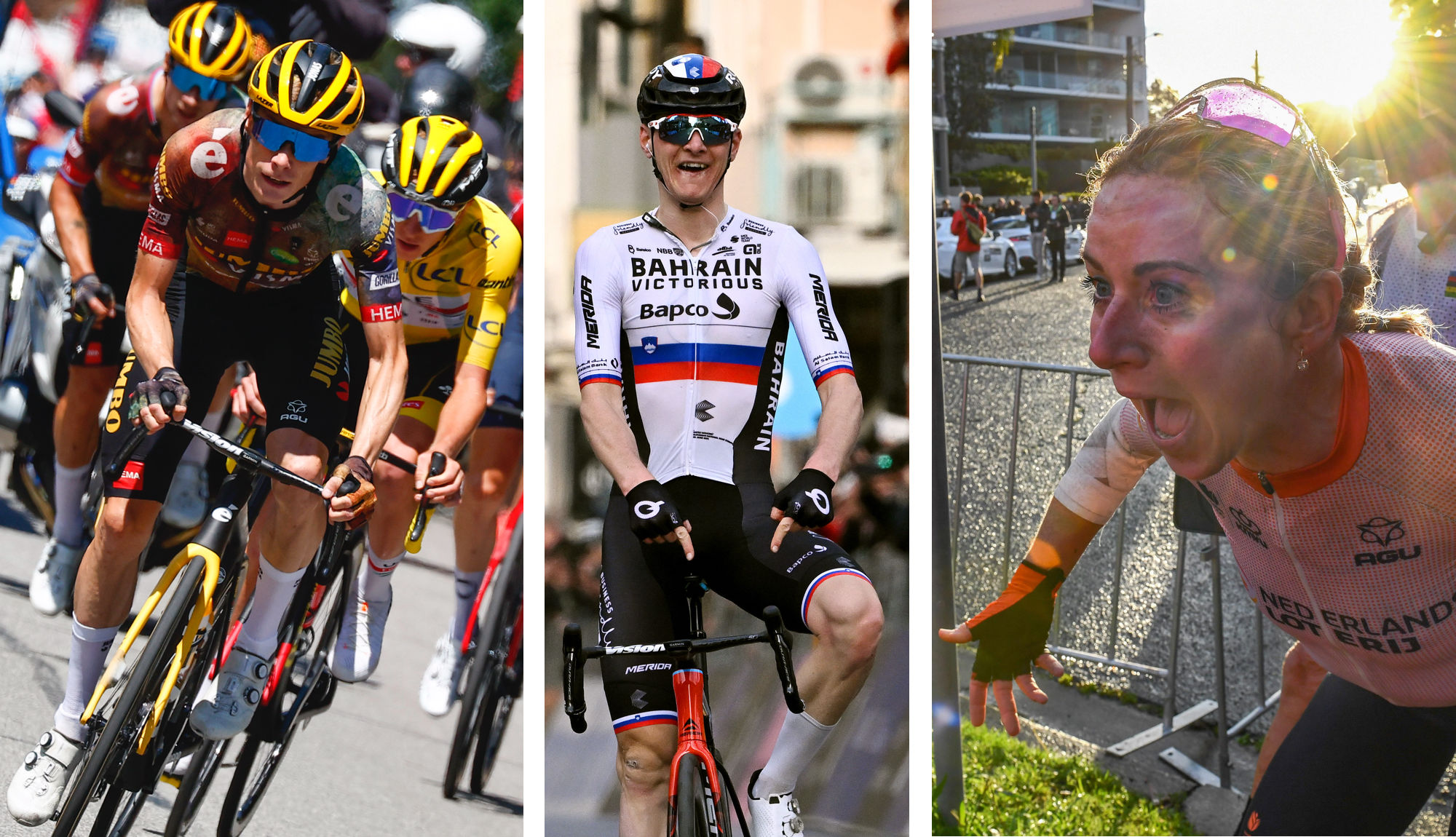
Every bike race contains a hundred stories or more, and every season is liberally peppered with drama. The 2022 road campaign was no exception in that regard, with incidents and intrigue aplenty from February to October.
The generational dominance of Tadej Pogačar, Remco Evenepoel and Annemiek van Vleuten was a common thread throughout the entire season, but there was no shortage of surprises and upsets along the way. Even apparently straightforward races conjured up a late twist.
There was drama on and off the bike in 2022, including the police raid of Bahrain Victorious ahead of the Tour de France and the debate over Mark Cavendish’s exclusion from QuickStep’s selection for La Grande Boucle.
Elisa Balsamo’s disqualification at Paris-Roubaix generated its share of polemics, while Van Vleuten’s crash in the relay at the World Championships only heightened the impact of her remarkable triumph in the road race a few days later.
As 2022 draws towards an end, Cyclingnews takes a closer look at some of the most dramatic moments from the pro road season.
Mohorič’s dropper post descent at Milan-San Remo
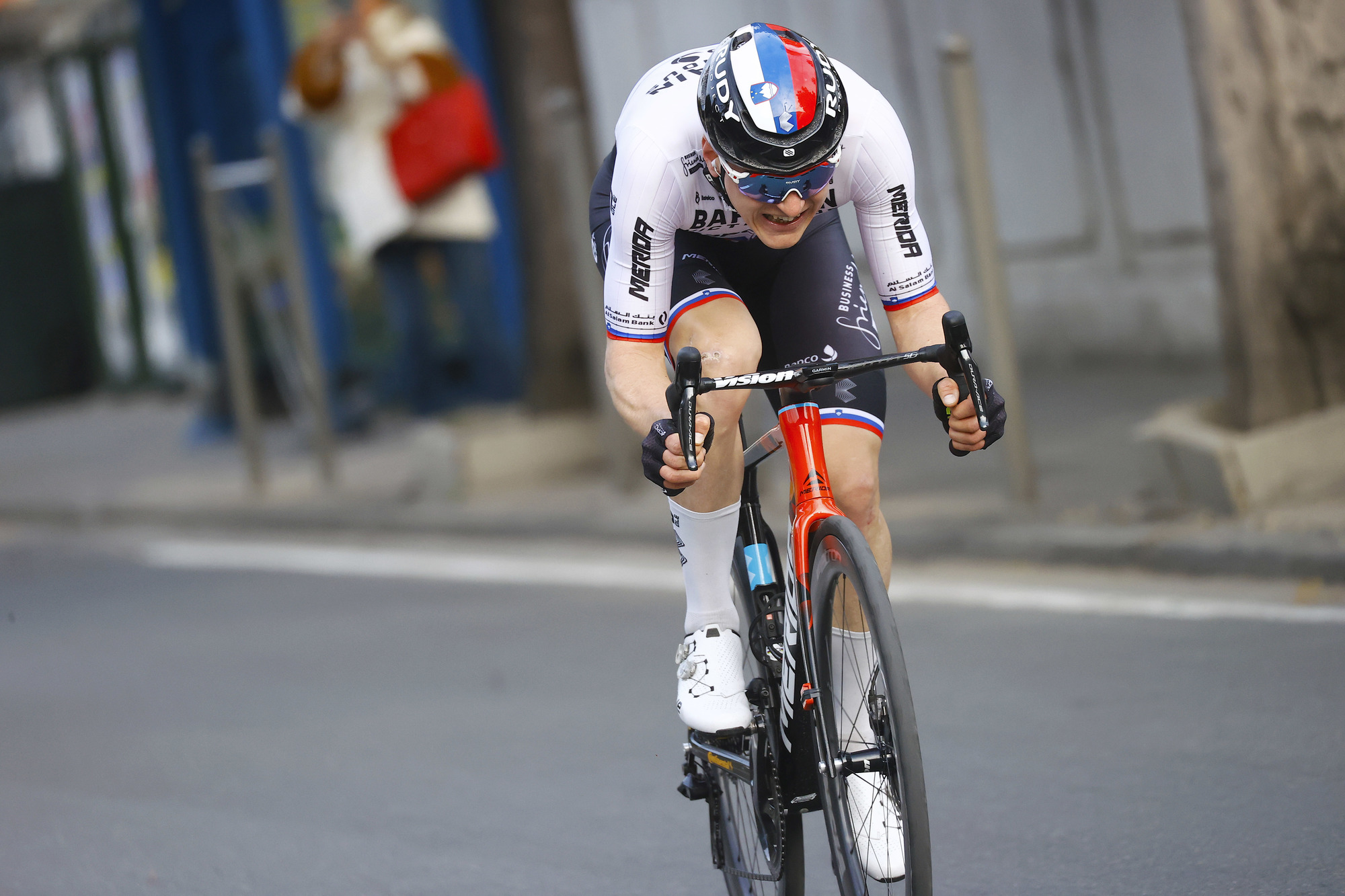
"I destroyed cycling once with the supertuck, now I’ve destroyed cycling again," Matej Mohorič grinned when he took a seat in the press conference room in San Remo’s Palafiori. He hadn’t, of course, but a little hyperbole was perhaps understandable after a heist of the kind Mohorič pulled off at Milan-San Remo.
His fellow Slovenian Tadej Pogačar had dominated the build-up to Milan-San Remo after dominating Strade Bianche and Tirreno-Adriatico, and all the pre-race talk seemed to centre around when and where the double Tour winner would launch his inevitable onslaught. There was fanciful talk that he might go on the Cipressa or even sooner, but instead he bided his time until the Poggio.
The latest race content, interviews, features, reviews and expert buying guides, direct to your inbox!
Pogačar, not for the last time this season, wasn’t quite stronger than his errors. He mistakenly made his first attack into the wind and although he continued the barrage all the way up the climb, he couldn’t quite slip away from Wout van Aert, Mathieu van der Poel et al. Mohorič, meanwhile, hung back and saved his strength as best he could, with Damiano Caruso and Jan Tratnik pacing him almost all the way up the Poggio.
On the drop over the other side, Mohorič took over, surging to the front and then swooping clear with a display of white knuckle descending not seen since Sean Kelly stalked Moreno Argentin into San Remo thirty years previously. Unlike Kelly, whose aerodynamics weren’t necessarily helped by his bulbous Brancale helmet (Kelly being Kelly, he made sure his bank account was, mind), Mohorič had some cutting-edge technological help in the form of an MTB-style dropper seatpost by Fox that allowed him to sit between 50 and 70mm lower on the descent.
"I was going to the race favourites I know and showing off the dropper. They asked me what I was doing with a dropper and laughed, but I warned them that if they follow me on descent, it’s at their own risk," said Mohorič, who himself narrowly avoided calamity on a late corner. "Fortunately, I didn’t crash. That would have looked stupid as I was about to win Milan-San Remo."
Uttrup Ludwig wins hearts at Tour de France Femmes
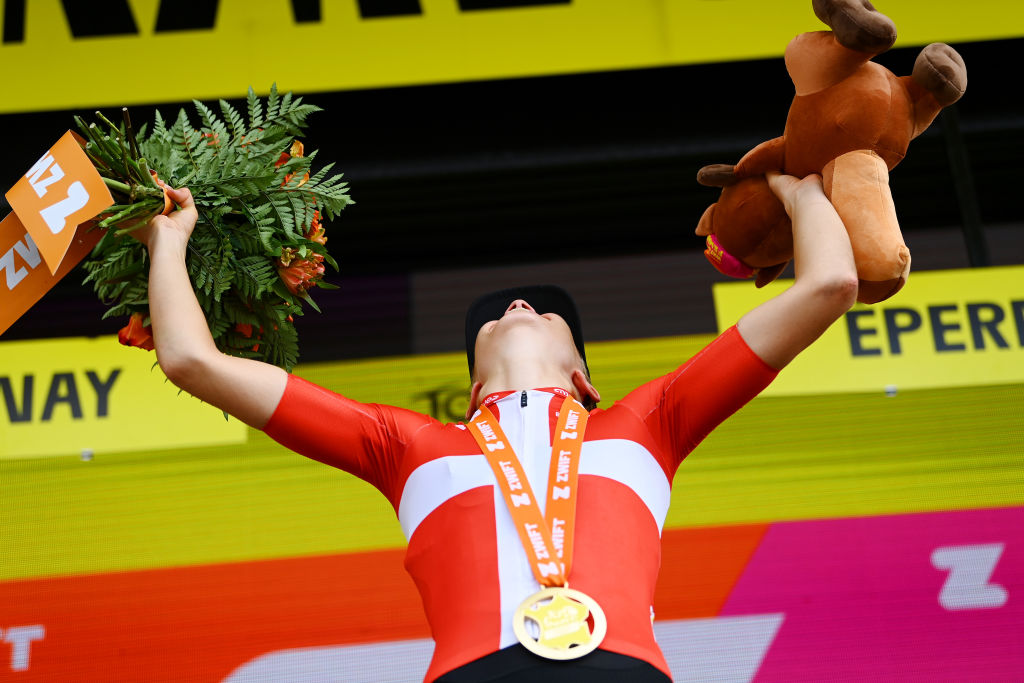
The Tour de France Femmes avec Zwift, on a whole, marked one of the most history-making moments in women's cycling as the peloton raced for the coveted yellow jersey for the first time in more than three decades.
There was no shortage of dramatic moments throughout the eight-day race that started at the Eiffel Tower and along the Champs-Élysées in Paris and ended with a summit finish atop the daunting La Super Planche des Belles Filles.
Endless headlining moments took the cycling and global media by storm, from Lorena Wiebes' opening sprint victory, Marianne Vos' full-circle moment that saw her win two stages and wear the yellow jersey for five days, an action-packed gravel stage, and the back-to-back mountain stages that netted Annemiek van Vleuten the overall victory.
If we could only highlight one dramatic moment of the Tour de France Femmes, it would have to be Cecilie Uttrup Ludwig's awe-inspiring victory on stage 3 into Épernay, especially after a FDJ-SUEZ Futuroscope's disastrous start to the race.
Cycling fans were treated to a spectacle that saw the Danish Champion come from five wheels back in a monstrous sprint up the Mur de Huy-esque final climb with her head down, passing Vos, Kasia Niewiadoma, Ashleigh Moolman-Pasio, and Elisa Longo Borghini to triumph in what was the biggest win of her career.
"To actually do it and be a Tour de France stage winner in this jersey?" Uttrup Ludwig said in an emotional post-race interview. "Oh my God. It just doesn't get better. What victory, man."
Van der Poel’s 'badass' move denies Pogačar at Flanders
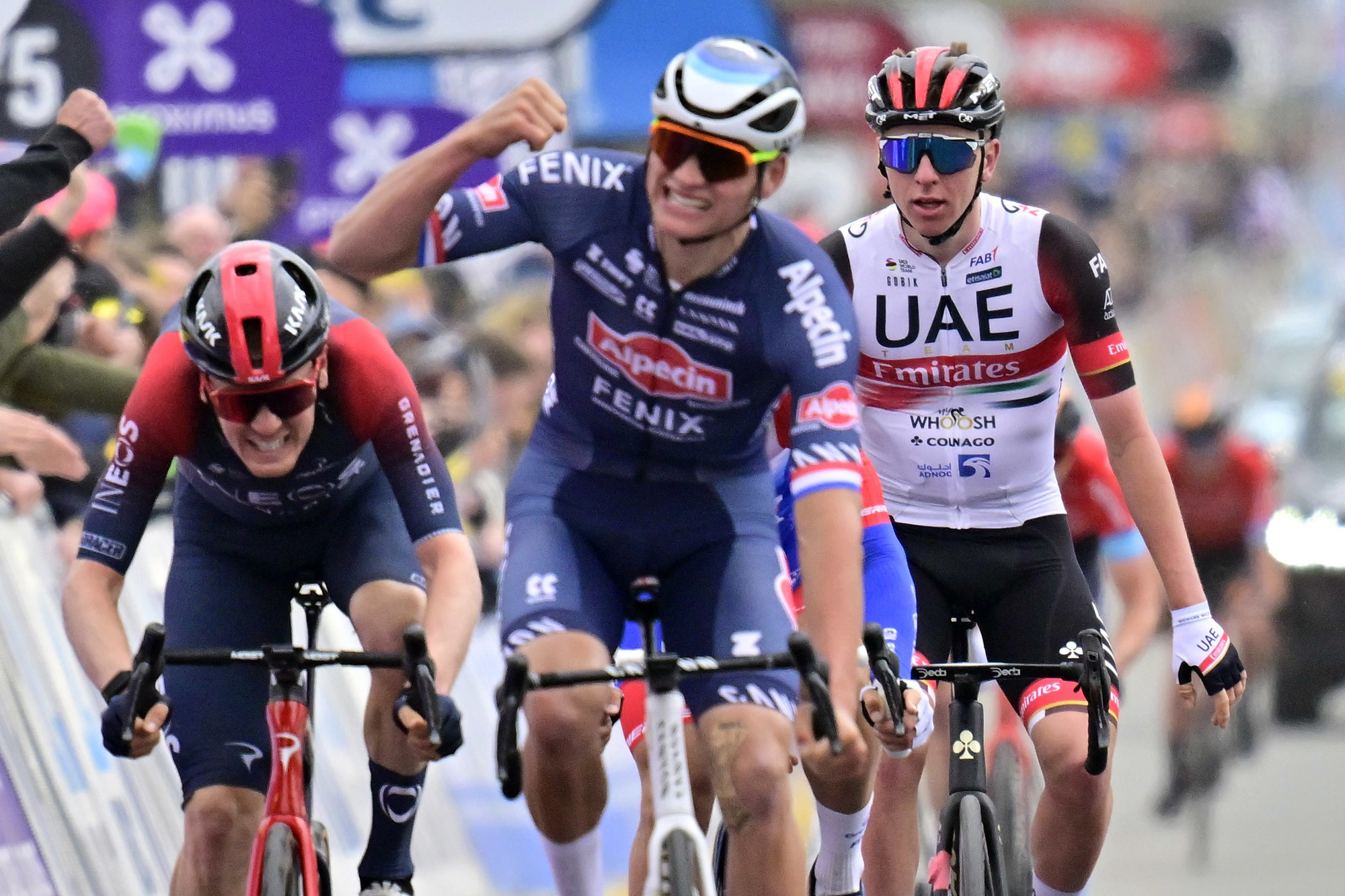
Fabian Cancellara has a reputation for verbosity, but the Swiss rider offered a most concise assessment of the Tour of Flanders in his Cyclingnews column the morning after the race. "Tadej Pogačar impressed me for 270 kilometres at the Tour of Flanders. Mathieu van der Poel impressed me for 300 metres," Cancellara wrote. "Badass - that’s the word I’d use to describe it."
Just like at Milan-San Remo, the build-up to the Tour of Flanders was mainly about the debutant Pogačar, not least because the previous favourite Van Aert had been ruled out with COVID-19. Van der Poel, however, had shown ominous signs of life with his Dwars door Vlaanderen victory in midweek, suggesting the nagging back injury that delayed his season was firmly behind him.
A Pogačar-Van der Poel duel was the expected and a Pogačar-Van der Poel duel is what duly emerged. Pogačar, caught on the wrong foot when the decisive move went clear at Dwars door Vlaanderen, wasn’t going to make the same mistake twice. He got his retaliation in first by accelerating viciously on the second time up the Kwaremont and then repeated the dose on the final time up the climb. On each occasion, Van der Poel was the only man to keep pace with Pogačar, even if it was a struggle.
On the final ascent of the Paterberg, Van der Poel came close to breaking. For once, the swan could clearly be seen paddling furiously beneath the surface as he strained to hold Pogačar’s wheel.
Staying in contention over the hellingen was equivalent to scoring a crucial away goal. On the flat run-in to Oudenaarde, Van der Poel – triumphant in a two-up sprint in 2020 and beaten in the same situation last year – perhaps felt himself on home ground. Time seems to decelerate on the long, long finishing straight and Van der Poel only increased that impression by slowing dramatically in front of Pogačar, allowing chasers Dylan van Baarle and Valentin Madoaus to catch them in the final 200 metres.
Pogačar was overgeared for the sprint that followed, and – at least by his reckoning – boxed in by Van Baarle. He would finish off the podium in fourth, while Van der Poel, having clicked up a couple of cogs, delivered a crisp sprint to take his second Ronde in three years. "Pogačar was maybe the strongest in the race," Van der Poel admitted, but the Dutchman was cannier and therein lay the difference.
Summit drama at Tour de Suisse
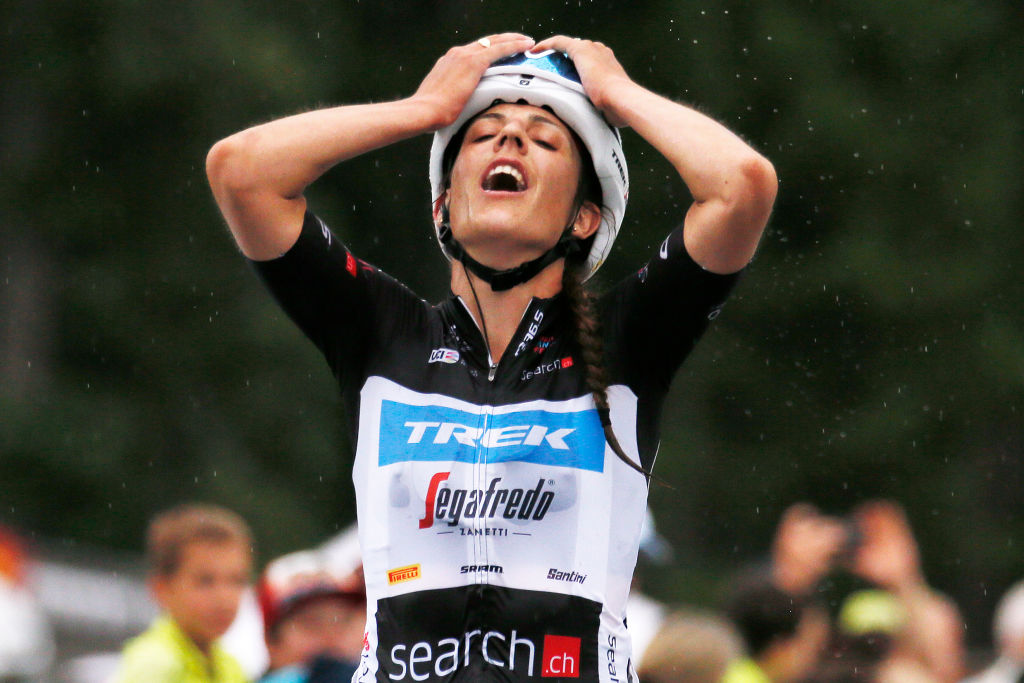
It was one of the most dramatic conclusions of the season as yellow jersey Kristen Faulkner (BikeExchange-Jayco) and Lucinda Brand (Trek-Segafredo) raced head-to-head into the summit finale of stage 4, mere seconds separating them from the overall classification at the Tour de Suisse.
Faulkner had won the stage 2 time trial and maintained her overall race lead through stage 3 and into the final day of racing. Everyone in the peloton understood that the race would come down to the final 6km climb at Lantsch.
Brand started the climb out front in a breakaway, but her efforts were not enough to hold off a remarkable performance from Faulkner, who closed the gap under stormy skies and torrential downpours, just outside the final kilometre.
Only two seconds separated them in the overall classification at that point, and so if it came down to a sprint, the stage win would decide the overall winner.
It was always going to come down to the wire, but as Brand led the pair through the technical finish across rain-soaked roads and into the tight final corner, Faulkner slid out and hit the pavement, losing both the stage win and the overall victory in one stroke of bad luck.
In a similar fashion (but different circumstances) to her teammate Elisa Longo Borghini, who overhalled Grace Brown by just one second on the final stage to win the overall title at the Women's Tour, Brand secured the overall title at the Tour de Suisse.
Hindley breaks Carapaz on the Marmolada
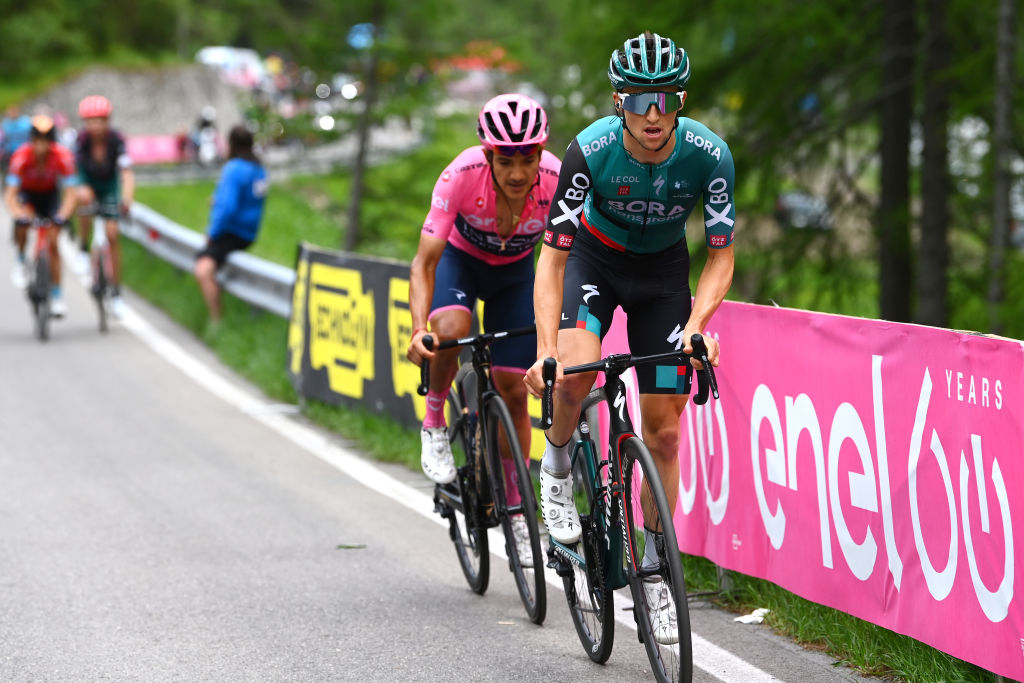
For three weeks, the Giro d’Italia was heavy on suspense but strangely light on drama. There were pyrotechnics on the miniature epic around Turin on stage 14, of course, and Van der Poel and Biniam Girmay provided plenty of entertainment on the way up the peninsula, but the GC battle was attritional rather than exciting.
That is no slight on Jai Hindley and Richard Carapaz, quite the opposite. Their tense tussle put one in mind of the 2003 Champions League final between Juventus and AC Milan; one could admire the enormous technical ability of both contestants while simultaneously rueing the fact there seemed to be little prospect of the deadlock being broken.
Hindley reached the penultimate stage just three seconds behind the 2019 champion after riding almost in lockstep for over 3,000km. They had finished together every day between the stage 2 time trial in Budapest and the final weekend of the race, with only time bonuses providing any separation in the overall standings.
Something had to give, and it did on the very last mountain pass of the race. 5.5km from the top of the Fedaia, the race went past a place called Malga Ciapela, where the gradient stiffens, the road straightens, and the air grows thinner. For the next three kilometres, there isn’t so much as a bend in the road to provide distraction from the effort ahead.
Ineos were controlling the race for Carapaz to that point, but with 3.4km remaining, Hindley began pushing and he felt something give. His Bora-Hansgrohe teammate Lennard Kämna, dropping back from the early break, added to the momentum. 2.8km from the top, Carapaz’s resistance was broken.
The floodgates opened in a dizzying few moments in the shadow of the Marmolada, as Hindley picked up 1:28 on a floundering Carapaz. Even with a time trial to come in Verona the next day, the Giro was his. It hadn’t been the most spectacular edition of the corsa rosa, but the denouement was somehow worth the wait.
"I knew that I had one bullet and if I fired, I had to make it count," Hindley said. He did that and more.
Van Vleuten wins Worlds with broken elbow
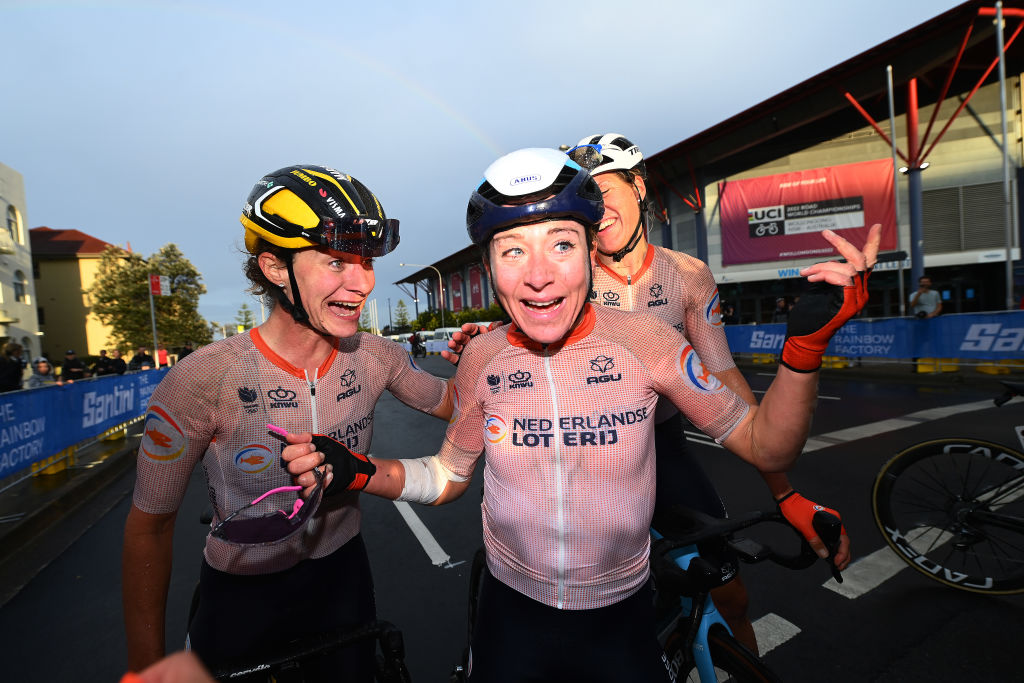
This year's UCI Road World Championships in Wollongong offered a range of top storylines as Zoe Backstedt dominated in the junior women's events, Vittoria Guazzini and Niamh Fisher-Black secured the first-ever under-23 road world titles as part of combined events with the elite women, and Annemiek van Vleuten went down in a freak crash during the Mixed Relay Team Time Trial.
However, by far the most dramatic moment of these Worlds was Van Vleuten's comeback from that crash, just three days after breaking her elbow, with a stunning victory in the elite women's road race to win the rainbow jersey.
The 164.3-kilometre event, from Helensburgh to Wollongong, looked to be coming down to a small bunch sprint of 13 riders as the race regrouped in the finale. But Van Vleuten, who'd spent the day working for Marianne Vos, suddenly ambushed her rivals in the final kilometre and soared away with a seated acceleration to claim a hugely memorable solo win.
They say a picture is worth a thousand words. The finish line photo that shows the sheer surprise on the faces of both Marianne Vos and Van Vleuten says it all.
"I’m still waiting for the moment for someone to tell me it’s not true,” Van Vleuten said after the race. “I had such a different plan beforehand. Today I was just a domestique with a broken elbow. And now I’m world champion."
Vingegaard drops Pogačar on the Col du Granon
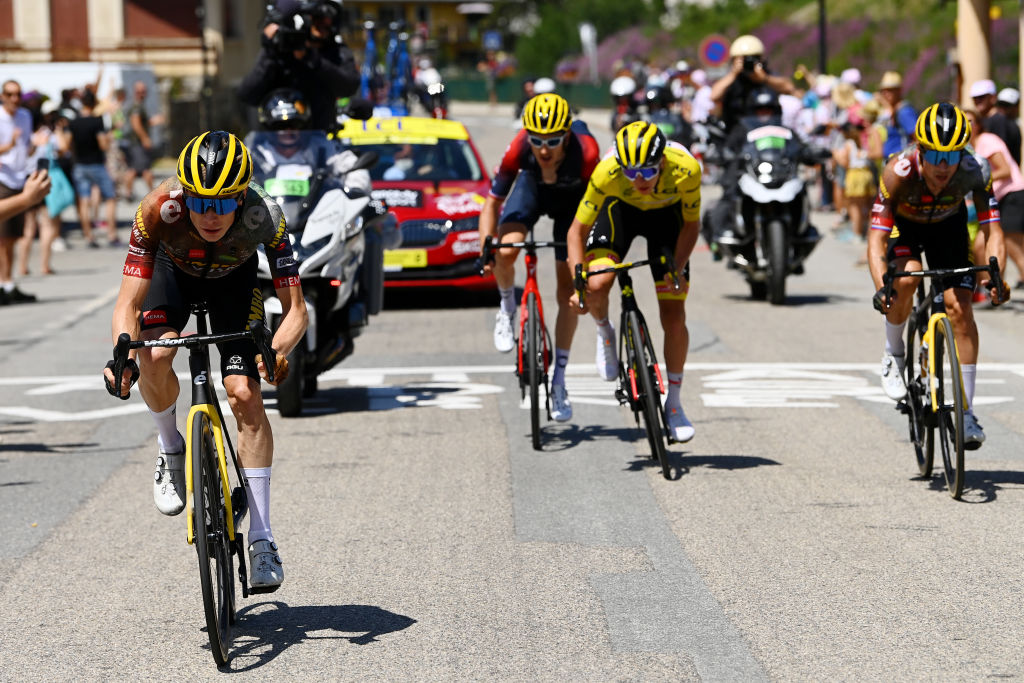
Pogačar provided some of the season’s most spectacular racing, from his exhibition at Strade Bianche to his almost nonchalant triumph at Il Lombardia, yet he features on this list only for three defeats. Since turning professional in 2019, Pogačar has made the extraordinary seem almost routine. And so, like Eddy Merckx or Bernard Hinault before him, his defeats seem to resonate more than his victories. That may not be fair, but it is understandable. He should take it as a compliment. Indeed, he probably does.
In the opening week of the Tour, fresh off a crushing win at the Tour of Slovenia, Pogačar made little or no concession to sparing energy, sprinting to a stage win at Longwy and then outlasting Jonas Vingegaard at La Planche des Belles Filles. After 10 stages, Pogačar was safely in yellow and with a 39-second buffer over Vingegaard and 2:52 in hand on Primoz Roglič. The Tour looked to be following its expected script, but everything changed utterly on the road to the Col du Granon on stage 11.
There was a madness about Jumbo-Visma’s approach, as Roglič and Vingegaard took turns to attack over the Col du Télégraphe and Col du Galibier, but there was method too. Pogačar’s aggressive instincts pushed him to respond to each and every attack, and left him isolated from his teammates with considerable distance left to run. Although some UAE Team Emirates companions bridged back up as the yellow jersey group swelled again approaching the Granon, it soon became apparent that Pogačar had flown too close to the sun.
Even as Rafal Majka led the group up the Granon on Pogačar’s behalf, it was hard to shake off the impression that the yellow jersey’s pedalling was looking laboured. Vingegaard confirmed as much when he punched clear with 5km remaining and Pogačar was unable to follow. He almost ground to a halt on the upper reaches of the climb, losing almost three minutes to Vingegaard along with the maillot jaune.
“I still see Tadej as maybe the biggest competitor and I expect he will try to attack me every day when he has the chance,” Vingegaard warned afterwards. He wasn’t wrong, but he held firm, even dropping Pogačar once again at Hautacam in the final week after the Slovenian had crashed on the preceding descent of the Col des Spandelles.
Kopecky uses strength and tactical perfection to win Strade Bianche
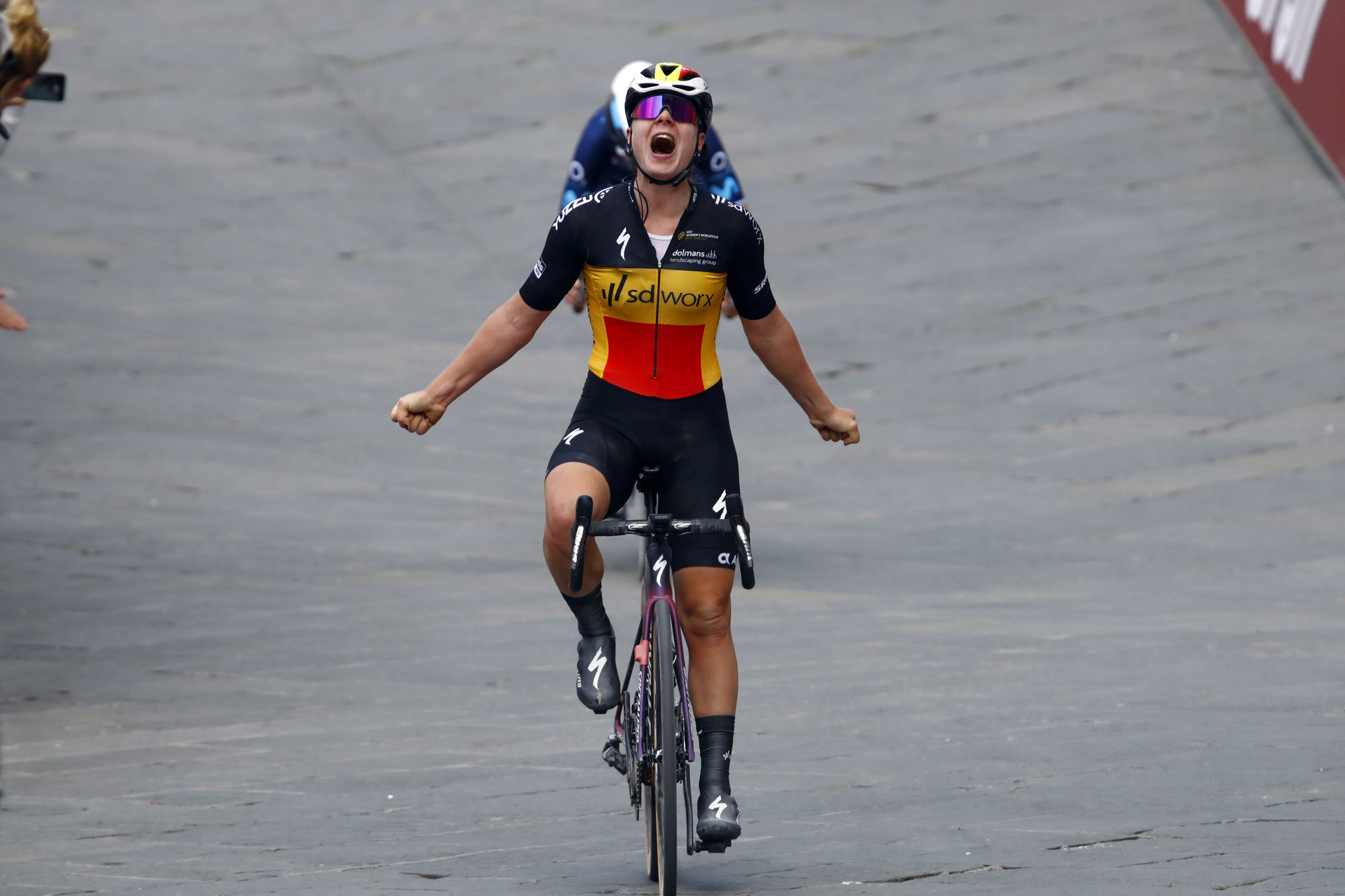
Lotte Kopecky has lived up to nearly every expectation in her first spring campaign with SD Worx. It's a tough decision between her victory at Strade Bianche - where she beat Annemiek van Vleuten on the steep Via Santa Caterina into the Piazza del Campo - or her victory at Tour of Flanders - where she won the biggest race in Belgium while wearing the national champion's jersey - but we choose the former as one of the most dramatic performances of the season.
It marked the first Women's WorldTour race this year, and the white gravel roads and steep pitches across northern Tuscany, always offer the perfect backdrop for an exciting bike race.
Three times Kopecky found herself off the front of the peloton at Strade Bianche, and two of those times she was with Van Vleuten, the only rider to have ever won the race twice.
In a thrilling finale, an unusually large group approached the final climb, with most of the favourites still in contention. Van Vleuten was the first to attack, 800m from the line, but she was immediately shadowed by Kopecky, and her teammate, Ashleigh Moolman-Pasio.
On the steepest section of the Via Santa Caterina climb, Moolman-Pasio faded as Kopecky fought to stay on van Vleuten's wheel. And while many expected van Vleuten to just ride away, she could not, because Kopecky was too strong.
Side-by-side in the narrow streets of Siena, Kopecky and van Vleuten unleashed their sprints, with Kopecky flying through the final corner to edge out the Movistar rider in the last hundred metres. After securing the victory, Lopecky collapsed from the effort in front of Italian crowds out to watch the race.
"You’re never confident [of beating van Vleuten], but I had a good feeling today, and I knew the person to follow was Annemiek and first, I had to let her go a bit. I don’t know what happened in my head, but I just kept going, and when we turned to the right, I passed her, but then the other corner, she passed me again, and it was really just one sprint to the last corner. It is amazing to win this race," Kopecky said.
“[Van Vleuten] said that I was really strong today but that the last corner was a bit tricky. Maybe I’ll have to see it again, but in my opinion, I don’t think I did anything wrong. It’s just a hard corner to take. For sure, when you come with so much speed, it’s just a sprint, and I’m not going to brake; she was also not going to brake.”
Roglič crashes as Evenepoel recovers at the Vuelta a España
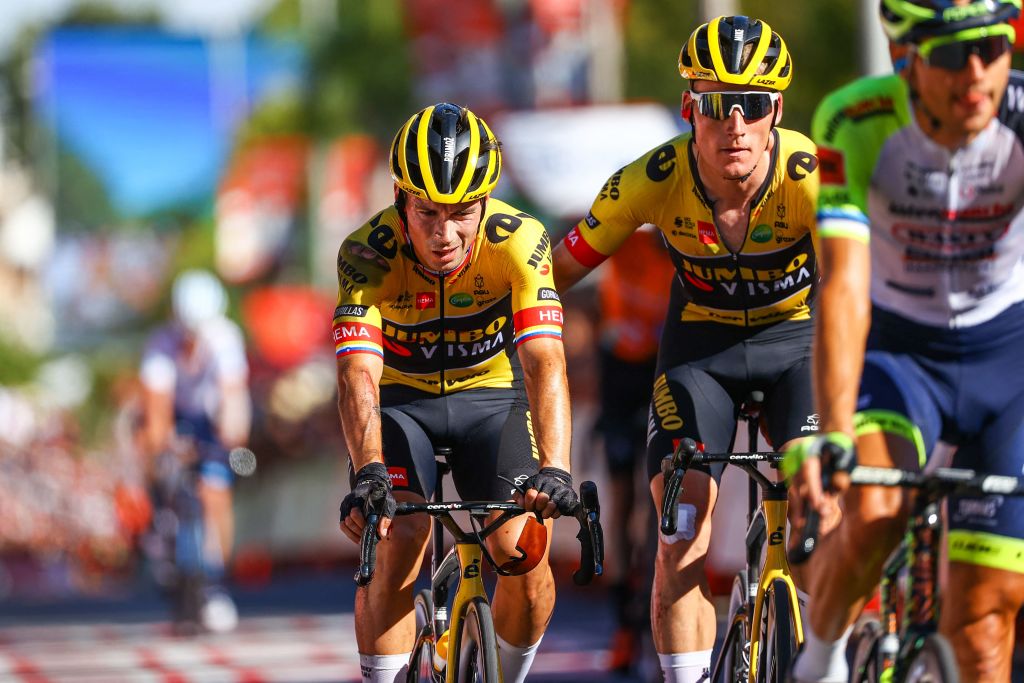
There is no such thing as a routine day at the Vuelta a España. On paper, stage 16 to Tomares, the first leg after the final rest day, looked the most straightforward day of the final week, but instead it produced arguably the most tumultuous finale – and certainly the most controversial.
The drama began when Primož Roglič – 1:34 off Remco Evenepoel’s red jersey – accelerated on an unclassified climb with 2.6km remaining, dragging four riders clear of the bunch in the process. At the rear of the peloton, meanwhile, Evenepoel had wheeled to a halt with his arm raised, due to a rear wheel puncture, and in the initial tumult, it wasn’t immediately clear if the incident had taken place inside the final 3km.
Afterwards, Evenepoel found himself fending off a Eurosport-propelled conspiracy theory that he had faked a puncture. “I'm not a guy who is going to fake such things,” he insisted, and the commissaires agreed, awarding Evenepoel the same time as the main peloton. He was fortunate, perhaps, that the climb to the finish was unclassified, and hence the 3km rule applied, but the rules were already clear from the start of the day.
No matter, a more contentious incident would take place out in front, where Roglič’s efforts ensured the late break would stay 8 seconds clear of the bunch. In the finishing straight, Roglič swung off rather than contest the sprint, which was won by Mads Pedersen. But as Roglič drifted back, he brushed against Fred Wright (Bahrain Victorious) and crashed heavily. Although Roglič succeeded in remounting and completing the stage, it was quickly apparent that the injuries to his wounds to right elbow, hip, knee and ribs might prevent him from continuing in the race.
So it proved. The following morning, Roglič was a non-starter. Evenepoel, having survived his biggest scare, went on to win the Vuelta, adding the world road title in imposing fashion two weeks later.
The fall-out from the Roglič crash didn’t end with his abandon, mind. Two days later, Jumbo-Visma issued a most bizarre and ill-judged press release in which the Slovenian and team manager Richard Plugge blamed Wright for causing the crash.
“I'm glad that Primož is speaking out, looking in the mirror and naming the behaviour of riders as well,” Plugge said in the tone-deaf missive. The season’s dramatic moments will always generate a wide range of opinions, but Plugge and Roglič’s was a decidedly minority view of this particular incident.
Cavalli the new face of the Ardennes Classics
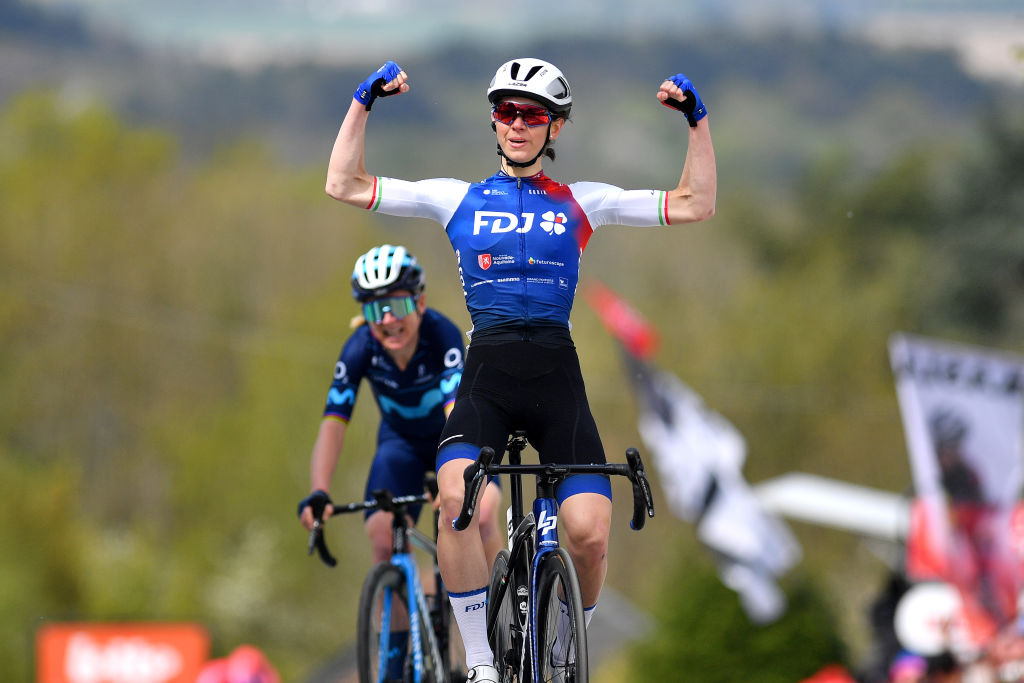
Marta Cavalli stole the show at the Ardennes Classics winning two of the three events at Amstel Gold Race and Flèche Wallonne.
It was her performance at the Amstel Gold Race that really set the tone for the remainder of the Classics season. She wasn't the expected winner, but the Italian raced a canny final after making the cut in an elite lead group on the final ascent of the Cauberg.
She then stole away on the famous climb to leave behind favourites and used her strength and an element of surprise to solo to the win and deliver the first big triumph of her career.
"Sometimes the race is not just legs, but also heart and head," were Cavalli's words of wisdom after winning Amstel Gold Race.
She went on to finish fifth at Paris-Roubaix Femmes but then proved she had what it takes to win again at Flèche Wallonne. In a completely different race scenario to Amstel Gold Race, Cavalli bided her time on the final ascent of the Mur de Huy.
She raced around the right-left on the Chemin des Chapelles before the long sweeping bend to the finishing straight and then worked her way past Liane Lippert and Demi Vollering as she jumped onto Annemiek van Vleuten's wheel. She held the Dutch rider steady until the closing 75 metres, where she unleashed her race-winning sprint.
"For me, it's a big surprise because, in Amstel, I won in a different way. I surprised everybody with an attack, but today I was just in the best shape of all the other riders," she said.

Kirsten Frattini is the Deputy Editor of Cyclingnews, overseeing the global racing content plan.
Kirsten has a background in Kinesiology and Health Science. She has been involved in cycling from the community and grassroots level to professional cycling's biggest races, reporting on the WorldTour, Spring Classics, Tours de France, World Championships and Olympic Games.
She began her sports journalism career with Cyclingnews as a North American Correspondent in 2006. In 2018, Kirsten became Women's Editor – overseeing the content strategy, race coverage and growth of women's professional cycling – before becoming Deputy Editor in 2023.